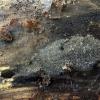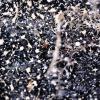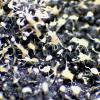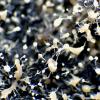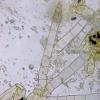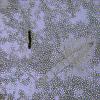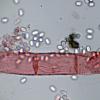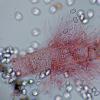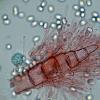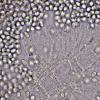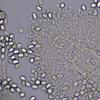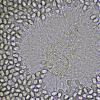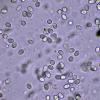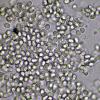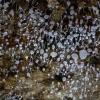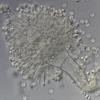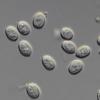
21-12-2025 09:32
Hello.A tiny ascomycete found embedded in wood in

21-12-2025 21:32
Pol DebaenstHello, Garden, Burgweg 19, Veurne, BelgiumOn 10/1

22-12-2025 23:38
Patrice TANCHAUDBonsoir, récolte sur un mur en pierre, apothéci

22-12-2025 00:47
Patrice TANCHAUDBonsoir, récolte à proximité du milieu dunaire

21-12-2025 21:40
Isabelle CharissouBonjour, j'aimerais connaitre les références de

20-12-2025 23:08
Patrice TANCHAUDBonsoir, récolte sur sol sablonneux dans l'arri�

20-12-2025 15:47
Mirek GrycHi.These grew on pine wood that was heavily covere
Help with some synnemata.
Josep Torres,
12-06-2025 08:58
Some synnemata sprouting in a scattered but abundant manner on the surface of a trunk lying on the ground, an indeterminate broadleaf tree. The area was predominantly home to hazel (Corylus) and oak (Quercus), sharing the space with abundant specimens of Mollisia, probably lividofusca.
Synnemas were 0.4 to 0.5 mm tall and 0.15 to 0.30 mm wide at the fertile part, although this width is due to several synnemas joining together to form a common gelatinous mass of conidia.
Branched conidiogeneous hyphae, covered with warts over their entire surface, with a fairly uniform width of 22.5 to 24 microns. These hyphae terminate in the conidiophore, highly septate and with a pointed end. Conidia are short, cylindrical, and ellipsoidal, thick-walled, hyaline, and measure in water:
(5.4) 5.8 - 6.6 (6.9) × (3.9) 4 - 4.6 (4.8) µm
Q = (1.2) 1.4 - 1.6 ; N = 40
Me = 6.3 × 4.3 µm ; Qe = 1.5
Given their characteristics, I'm thinking of Stilbella or related genera, but I haven't been able to find any reasonably convincing proposals in the Keys.
Any feedback from you would be welcome.
Thank you in advance.
Best regards.
Adam Polhorský,
12-06-2025 14:58
Josep Torres,
12-06-2025 21:30
Re : Help with some synnemata.
Thanks, Adam, for your help.
It fits perfectly, so it looks like Gloiosphaera clerciana.
Best regards,
Josep.
It fits perfectly, so it looks like Gloiosphaera clerciana.
Best regards,
Josep.

